
Transcription
BREAKING: Voting rights loss at SCOTUS
aclu@aclu.org
Monday, June 11, 2018 03:32:22 PM EDT
This message contains blocked images.
or
Hi Charles -
The Supreme Court just rubber-stamped Ohio's voter suppression tactics in Husted v. A. Philip Randolph Institute. The decision gives Ohio the power to target voters who miss just one election cycle for removal from the rolls. This is despite the National Voter Registration Act's express prohibition on purging voters just because they don't vote. I'm furious, but I'm more driven than ever to defend our most fundamental right.
This decision is a gutting reminder that the Trump administration is determined to turn back the clock on our voting rights. For decades, the Justice Department maintained this type of voter purge was illegal, but under the Trump administration and Attorney General Sessions, the department switched sides and supported Ohio's unnecessary restrictions on the right to vote.
As an ACLU Voter, you know that we must exercise the right to vote now more than ever. We can't be discouraged by these roadblocks - we have to break them down.
Under Ohio's "Supplemental Process," if you miss just one election cycle, you risk losing your voter registration. The state wrongly assumes that voters who don't cast a ballot in two years have changed addresses, invalidating their current registrations. As a result, hundreds of thousands of Ohioans have been stripped of their right to vote, and many only find out when they arrive at the voting booth. And like every barrier to voting, people of color and those with low incomes are disenfranchised the most.
Let's be clear. Our right to vote isn't "use it or lose it" - and this decision doesn't give states a green light to kick eligible voters off the roll without notice.
We must do everything we can to defend our most fundamental right, which means showing up to vote this fall and breaking down these roadblocks to the polls.
Thanks for defending our democracy.
Anthony D.
Anthony D. Romero
ACLU Executive Director
Please note: If you forward or distribute, the links will open a page with your information filled in.
This email was sent to: prisonadvocate@yahoo.com
This email was sent by:
American Civil Liberties Union
125 Broad Street, 18th Floor
New York, NY 10004, USA
We respect your right to privacy
Update on your Amazon order to stop government surveillance
aclu@aclu.org
Tuesday, June 12, 2018 05:22:45 PM EDT
This message contains blocked images.
or
Hi Charles -
Amazon is selling its facial recognition system. Rekognition, to the government, and it's actively partnering with law enforcement to enhance its implementation. Amazon has no business powering automated state surveillance, which is why we're delivering our petition signatures on Monday - right to Amazon's front door.
Right now we have around 30,000 signatures, but we need as many signatures as possible before Monday to make sure Amazon hears us loud and clear.
Yesterday at the ACLU Conference, one panellist shared that all the big tech companies' internal listservs are paying close attention to the public response to Rekognition - and they're tracking petition numbers closely.
Amazon advertises Rekognition as a machine that can watch "people of interest" in real time, recognize you in photos of large groups of people, crowded events, or public places. At a time when we're joining public protests and our communities are victims of immigration raids at unprecedented levels, Rekognition can be readily deployed to violate our civil rights.
People should be free to walk down the street without being watched by the government. By automating mass surveillance, Rekognition threatens this freedom, posing a particular threat to communities already unjustly targeted in the current political climate. Once powerful surveillance systems like these are built and deployed, the harm will be extremely difficult to undo.
Thanks for taking action,
Nicole Ozer
Nicole Ozer
ACLU Technology & Civil Liberties Director, defending rights in the digital age
Please note: If you forward or distribute, the links will open a page with your information filled in.
This email was sent to:: prisonadvocate@yahoo.com
This email was sent by:
American Civil Liberties Union
125 Broad Street, 18th Floor
New York, NY 10004, USA
We respect your right to privacy -
Dangerous Supreme Court ruling
causenet@commoncause.org
Tuesday, June 12, 2018 11:36:27 AM EDT
This message contains blocked images.
or
Charles, the Supreme Court has narrowly approved an Ohio law that could result in thousands of voters getting kicked off the rolls -- especially marginalized and underrepresented communities, like people of color, people living with disabilities, and low-income people.
Yesterday the Court upheld Ohio's mass removal of eligible voters from the rolls under the most flimsy of circumstances. Ohio's Secretary of State, Jon Husted, targeted registrants who missed just a few elections for removal from the voting rolls. Many voters don't realize this until they're turned away at the polls.
This policy disproportionately silences people of color -- and everyone else who's already underrepresented at the ballot box. And this decision creates a danger that other states will follow, disenfranchising millions of eligible Americans.
Charles, we all deserve an equal voice and an equal vote. This decision goes against everything we believe in as Americans -- and we can't let it go ignored. In her scathing dissent[1], Justice Sonia Sotomayor a path forward:
"The majority...entirely ignores the history of voter suppression...Communities that are disproportionately affected by unnecessarily harsh registration laws should not tolerate efforts to marginalize their influence...Today's decision forces these communities and their allies to be even more proactive and vigilant in holding their States accountable and working to dismantle the obstacles they face in exercising the fundamental right to vote."
We couldn't agree more.
I believe Common Cause Members are ready to rise to the challenge. We must respond to this outrageous ruling by fighting back against vote suppressors like Husted, and Jeff Sessions...but also passing new reforms like Automatic Voter Registration that bring people in to our democracy -- not shut them out.
Today's decision is a direct attack on the right of every American to have a voice in the decisions that affect our communities and our families. But sadly, disappointments like this are business as usual from the Roberts' court -- from Citizens United to the Shelby County decision that gutted key sections of the Voting Rights Act.
The Court interprets the law -- but we can change the law. We must modernize and update the Voting Rights Act to stop vote suppressors like Jon Husted from kicking eligible voters off the rolls. And we can create better voting rules that encourage -- not discourage -- eligible Americans that want to participate in our democracy.
Ohio is one of the most gerrymandered states in the country, which makes people feel like their votes don't count. Now, if someone sits out more than once, Husted can remove them from the rolls.
As a public servant, Husted should be doing whatever he can to ensure more eligible citizens vote, so the outcomes of our elections better reflect our communities and our priorities. But Husted represents a factions of the Republican Party that has decided to rig the system and silence our voices to get what they want.
Protecting our right to vote is one of our top priorities at Common Cause. We're gearing up to mobilize thousands of trained, nonpartisan, Election Protection volunteers to help voters know their rights at the polls in 2018. With enough public support, our advocates can restore the core strength of the Voting Rights Act, modernizing it for the challenges voters face today. By staying vigilant and active, we can stop new voter suppression attempts in any state. And we can pass proactive, pro-voter reforms like Automatic Voter Registration that encourage every eligible American to participate in our democracy.
As Justice Sotomayor said in her dissent, "our democracy rests on the ability of all individuals regardless of race, income, or status, to exercise their right to vote." We will continue to fight in the courts, in state legislatures, and with our grassroots power to prevent states from erecting barriers to voting.
Thank you for your immediate response,
Jesse Littlewood, National Campaigns & Digital Director
and the team at Common Cause
P.S. to learn how to participate in our upcoming grassroots mobilization or Election Program, and other ways to support our voting rights campaigns.
Footnotes:
[1] https://www.supremecourt.gov/opinions/17pdf/16-980_f2q3.pdf
---
https://thecrimereport.org/2018/06/08/why-arent-we-spending-more-on-prisoner-education/
Why Aren't We Spending More on Prisoner Education?
Every dollar invested in correctional education reduces future criminal justice costs by five dollars. But despite studies bearing this out, policymakers hesitate even to revive programs that were scrapped in the tough-on-crime era, says a leading prison reformer.
By Stephen Steurer
Education reduces crime, plain and simple.
The RAND Corporation underscored the positive impact of education in its 2013 review of the research reports on correctional education over the last couple of decades. Bottom line from their reports: providing education programs for incarcerated men and women significantly reduces future crime all by itself, separate from any other treatment they receive.
Combined with other effective programs, such as drug rehabilitation and mental health counseling, education can help to reduce crime and recidivism even more effectively.
RAND also demonstrated clearly that an education program pays for itself several times over. Every dollar invested in correctional education creates a return of five dollars in the reduction of future criminal justice costs.
So why are we not spending more criminal justice dollars on education? We literally spend billions on the most expensive—and least effective—option: locking folks behind bars in record numbers.
Let’s take a brief look at the large numbers of people incarcerated in the US and the cost in dollars the American taxpayer must bear. Here are some facts from research and data collected by the US Departments of Justice and Education:
Approximately 2.3 million people are incarcerated in the U.S., more than in any other developed nation by number and percentage of population;
Educational attainment levels among prisoners are far below the national average;
A lack of education is a major predictor of future crime;
Over two-thirds of those incarcerated are African American and Latino, predominately men;
95 percent of prisoners will eventually be released from prison with 600,000 released each year;
The annual budget for federal, state and local correctional agencies totals $80 billion.
Most criminologists understand the effectiveness of education and other programs but, because of the American “tough on crime’ campaign going all the way back to the late 1980s, less money is spent on rehabilitation than incarceration.
If we know this is counter-productive, why do our federal leaders, as well as many state leaders, continue to spend little for correctional education programs? Why aren’t they re-directing funding from prison beds to schools and classrooms instead of building more cells?
Research tells us that 95 percent of those incarcerated today will be released within five years. Within three years the majority of those currently behind bars will be returning to society. We are not likely to reduce sentence lengths or parole for most of these people so why don’t we take this opportunity to educate them while behind bars?
There are signs this may be finally be changing.
The current White House has shown real interest in prison reform and investment in programs to reduce recidivism. In a May 2018, a report entitled “Returns on Investments in Recidivism-Reducing Programs” by the Council of Economic Advisors (CEA) reviewed and reported on research on mental health, substance abuse and education programs that are cost-effective.
Oddly, the study focused mostly on mental health and substance abuse and did not cite the extensive research report conducted by the RAND Corporation in recent years. The CEA report, however, did say, “We calculate that educational programming needs only a modest impact on recidivism rates of around 2 percent in order to be cost effective.”
The RAND study on correctional education, however, estimated the real impact to be 13 percent, much higher than the two percent needed to be effective.
Research also shows more appalling statistics about the education deficits of the prison population. Most incarcerated people are drop-outs, with more than half of them lacking a high school education. The lack of education does not in itself cause crime but it is highly correlated with other social problems such as criminal behavior, drug addiction, homelessness and poverty. Because under-educated people do not qualify for jobs with a living wage, many resort to illegal ways to support themselves.
So why not redirect more of the correctional budget currently spent on cells to fund more education programs?
It makes simple economic sense if education reduces future criminal behavior. Some advocacy groups are getting the message. For example, the conservative Koch brothers are launching Safe Streets and Second Chances, pilot programs in four states to provide career education, substance-abuse programming and counseling to 1,000 prisoners who will then be released.
This project exemplifies the bipartisan nature of the current movement for the expansion of programs to reduce recidivism and return prisoners to society as productive workers.
If programs for inmates, who lack basic academic and vocational skills, were increased and more people left prison with diplomas and career certifications, researchers could confidently predict a significant drop in future crime. Why can’t we begin remodeling our jails and prisons into educational institutions by re-purposing space with high school completion and job skills programs? If there is no appropriate space, why not move some portable classrooms behind the fence or into the yard?
Research also seems to indicate that higher levels of achievement result in even less crime. There is data indicating that inmates who participate in college commit future crime at even lower levels. Shouldn’t we support college level courses as well? For years the public has generally supported high school education for the incarcerated but not college.
Times have changed and we know that a high school education is no longer sufficient to obtain decent employment. The new standard is at least a two-year degree or a career technical certificate.
Some people believe it is too late to turn adult criminals around to lead a positive life. In fact, inmates do participate and achieve in school behind bars even if they are simply required to attend.
Testimony from former inmates demonstrates how academic success changed their perception of themselves.
Testimony from former inmates clearly demonstrates how academic success changed their perception of themselves along with their own personal goals. College teachers who work in both the free community and in prisons will tell you that incarcerated students generally do much better than those in the community.
As we know in the free world it is never too late to complete school and to graduate. Lifelong learning really works for most everyone.
Maybe a little history will help explain why we are spending so little on education and more on incarceration. In 1994, with violent crime and drug abuse growing fast, federal and state governments got much tougher on crime, passing laws instituting numerous and more strict sanctions against offenders of all kinds.
Before then, inmates were eligible for Pell grants. Most states had robust college programs for inmates. In a swirl of frenzy and false accusations of fraud about fly-by-night colleges stealing federal money, Congress ended inmate eligibility for Pell grants and severely limited the federal funding levels even for high school, vocational and adult education programs as well.
When many of us were seeking support in our struggle against these foolish cuts I hoped to affect the negative attitudes in the press and contacted columnist George F. Will who agreed to visit a college classroom of Maryland prison inmates using Pell grants. In a Jan 30, 1994 article published in the Detroit Free Press and theWashington Post, entitled “Do Pell grants for prisoners work?,” Will posited that Baltimore’s streets “…may be safer than they would be if he (an inmate nicknamed “Peanut”) had not acquired some social skills with the help of his Pell grant.”
In a discussion the day before releasing the article, Will told me that he would be happy to consider revisiting the issue of correctional education when better research studies documenting the effectiveness of correctional education were available.
In the next several years better research became available, and thanks to the studies noted above that were conducted by Dr. Lois Davis and her research team at the RAND Corporation, many research studies were rigorously reviewed. The RAND publication noted above concluded that “for every dollar spent on correctional education, five dollars are saved on three-year re-incarceration costs.”
The research had meticulously reviewed every quality research study completed over the last two decades. RAND researchers wrote that the estimate of reduction was conservative and they had not been able to measure other positive results, such as job acquisition, improved family and community conditions and conditions of confinement.
What has been the impact of this study? Has the study resulted in the growth of educational budgets for the incarcerated? Have state and federal correctional education budgets begun to grow as legislators take into account the effectiveness of correctional education? Hardly!
Budgets for correctional education have been reduced by as much as 20 percent in some states.
The RAND study had actually pointed out opposite trends in funding. Federal and state budgets for correctional education have been significantly reduced since the 2008 recession, in some states by as much as 20 percent, even while prison populations continued to grow. In an age of soul searching about how to spend tax dollars wisely on cost-effective social programs with high impact, one would hope political leaders would do some serious thinking and take heed of cost-effective research by non-partisan corporations like RAND.
The Obama administration had disseminated and publicized the conclusions of the RAND study and encouraged the adoption of its recommendations. But as it has with so many other important issues, Congress has failed to act on research it originally funded.
With the notable exception of Georgia and California and a few other states, there have been little or no changes in state funding in recent years for the education of the incarcerated. Ever since the mid-1990s, most states have continued to trim education programs in prisons.
One example is California. After he was elected in 2003, California Governor Arnold Schwartzenegger’s administration decided to drastically cut correctional education programs drastically. Ironically in the last few years, partly as a result of the RAND research, California has dramatically expanded academic and career technology as well as post-secondary programs. For example, inmates also now qualify for free community college tuition while incarcerated.
Another exception is the normally conservative state Georgia. It has also taken to heart the RAND research and re-designed its entire correctional education system and also increased state funding dramatically. A post for a statewide superintendent of prison schools was created. Many more teachers were hired and programs implemented. And an investment was made in educational technology to modernize instruction and teach computer skills necessary for today’s job market.
While now admitting the RAND research is solid, most politicians continue to say no to additional funds because there are more pressing needs. Never mind that we were simply asking for redirection of current budgets, not additional outlays of public funds.
Fortunately for the US, some leaders have begun to rethink the costly and mostly ineffective “Get Tough on Crime” movement of the last 30 years. That terribly misguided effort to stem the rise of murder, violence and the drug epidemic resulted in the so-called “Three Strikes and You are Out” legislation signed by President Bill Clinton and then copied into state law by many governors and state legislators.
Literally, millions of people have been incarcerated for longer periods of time at the cost of billions of dollars with additional and terribly negative impacts on our communities and families. Only when it had become apparent that the US could no longer pay for the upkeep and maintenance of the criminal justice system have political leaders started taking a serious look at the negative results of the draconian and unjust crime reduction laws.
President George W. Bush and other political leaders had begun to realize the folly of the “Three Strikes and You Are Out” laws of the 1990s. Bush recommended the passage of the Second Chance Act of 2002 in one of his early State of the Union addresses. The momentum has slowly grown since and reformation has become a bipartisan issue. Instead of spending billions on incarceration some are beginning to look at less costly rehabilitation programs and reentry as a way to reduce future crime.
There are now strong efforts (at the federal level to rethink how we are doing correctional business. Those of us in the education, drug rehabilitation and mental health areas are working to persuade political leaders to bring about change in the laws and priorities in budgets.
Ironically, one of the most recent examples at the federal level is the fight within the White House between Attorney General Sessions and Jared Kushner over the basic philosophy of corrections and the role of prisons to build programs that reduce recidivism. An article in the New York Times illustrates the strong feelings among political leaders, particularly in the Senate, about the direction of prison reform.
Kushner, partly as a result of his own father’s incarceration in the federal Bureau of Prisons, believes in the need for more rehabilitation and reentry programs. Sessions, unfortunately, remains one of the most steadfast believers in longer sentences and tough drug laws.
Positive change can be painfully slow. However, when the US does become interested in a particular issue, it is amazing how quickly it can retool and redirect its resources. For those of us old enough to remember, we did it by putting a man on the moon when the Russians threatened US leadership in the space race.
Hopefully, we can redirect ourselves again to help change the direction of the lives of so many people returning to society after years of incarceration.
Education is not rocket science.
We already know how to teach people to read, write, do math and train for jobs. For the sake of the incarcerated and, literally, for our own health and safety, let’s build and open more school programs in our prisons and jails. Education does reduce recidivism!
Chief Justice Warren Burger said it best, in a 1987 speech to the American Bar Association:
We must accept the reality that to confine offenders behind walls without trying to change them is an expensive folly with short term benefits — winning battles while losing the war. It is wrong, it is expensive, it is stupid.
Finally, I hope that since we now have the solid research George Will asked for, he might consider looking at correctional education programs again, take to heart the RAND conclusions, and write a follow-up to article about “Peanut”.
We continue to need serious political writers, both liberals and conservatives, to urge government and courts to get really “tough on crime” and sentence criminals to do their time in school to straighten out their lives.
We need to literally “throw the book at them.”
====
https://www.nlg.org/second-j20-trial-ends-with-no-convictions-prosecutor-hiding-evidence/
Second J20 Trial Ends with No Convictions, Prosecutor Hiding Evidence
Posted on June 13, 2018
By Jude Ortiz, NLG Mass Defense Committee Chair
Washington, DC – Much has happened in the J20 (inauguration conspiracy) case since the NLG wrote about the first J20 trial in November 2017. Let’s start from the latest developments and work our way backwards: the second trial ended with either acquittals or mistrials on the charges for each of the defendants, a presiding judge threw out the conspiracy charge as a sanction for the prosecutor hiding evidence, the prosecutor dismissed all charges against two trial groups in an apparent attempt to avoid sanctions, and the prosecutor got caught hiding 69 recordings from the defense. This was all in the course of about three weeks—a period that came months after the prosecution entirely lost the first trial last year and subsequently dropped charges against more than 100 defendants.
If your head is already spinning because of this list, that’s because an incredible amount of significant legal developments have been crammed into these cases. For in-depth information about the cases and ways to be in solidarity with the remaining defendants, follow Defend J20 Resistance and stay up-to-date on their blog.
In this most recent trial (the M14, for May 14, group), four defendants went into the trial facing a slew of felony and misdemeanor charges adding up to more than 60 years in prison. While not all defendants faced the exact same charges, the misdemeanors included conspiracy to riot, engaging in a riot, assault on an officer, and resisting arrest; the felonies included inciting a riot and five counts of property destruction. The prosecution went hard against these defendants, particularly since they were alleging that three of the four of them had broken windows. Despite these efforts, the jury fully acquitted one defendant, acquitted on all charges for one defendant except for being deadlocked on misdemeanor engaging in a riot, acquitted one defendant of the assault on an officer charge and deadlocked on the rest, and deadlocked on all charges for the remaining defendant. The judge declared mistrials on all the deadlocked charges, so the prosecution has until July 11th to decide if they want to re-file the charges. Or they could cut their losses after their second defeat at trial and drop these politically motivated charges.
Let’s look at how all this came about.
As with the first trial last year (the N15, for November 15, group), the prosecution was relying heavily on the conspiracy count, Pinkerton liability, and the aiding and abetting elements of the property destruction counts to argue to the jury that all the defendants were guilty of everything. The prosecution was further relying on the idea that defendants staying with the anticapitalist/antifascist march after windows started getting broken, and then getting mass arrested by the DC police, proved that all the defendants incited the so-called riot.
The N15 trial ended in full acquittals for each of the six defendants. In other words, the jury did not buy the government’s theory that attendance at a protest means that people are engaged in a conspiracy or are legally culpable for any criminalized acts that allegedly occur at that protest. This was a great victory for those defendants and their co-defendants with trials scheduled throughout 2018, as well as a strong blow to the prosecution’s draconian case. Yet many questions (and great risk) remained for the defendants still facing charges as 2018 began. Would future juries think the same? If so, would they apply that logic to people the state was alleging broke windows? More than 200 people had been arrested on inauguration day and ultimately slapped with blanket charges, facing more than 60 years in prison. In January, the prosecutor suddenly dismissed without prejudice charges against 129 of the remaining 188 defendants, leaving 59 facing the full brunt of the state’s repressive attack and the full weight of the uncertainties of going to trial.
The M14 trial group became the first trial of 2018 after another series of strange legal wranglings caused the March and April trial groups to be rescheduled. Both this trial and the N15 trial relied heavily on a video of a Disrupt J20 planning meeting prior to the inauguration—a video surreptitiously recorded by one of the several Project Veritas operatives who had infiltrated multiple protest planning meetings. Project Veritas is a far-right “investigative” organization that has become infamous for its unscrupulous attempts at conducting sting operations against groups and individuals they disagree with.
Over defense objections, the video was admitted into evidence at both trials and authenticated by an undercover DC cop. This undercover testified that the meeting included breakout groups for many social justice issues and that he did not report any plans of violence to his superior after infiltrating the meeting. Nonetheless, the prosecution stressed that this video established a criminal conspiracy that every defendant joined when they attended the march. (This narrative immediately shifted when the prosecution’s evidentiary violations surrounding the Project Veritas videos came to light in pretrial hearings for other trial blocks; at that point, the prosecution pivoted to claims that a conspiracy was actually formed on the streets of DC during the march itself.)
The prosecution also stressed, at different times and to various extents, that they had handed over to the defense the entirety of this video and that it was the only one obtained from Project Veritas. While the M14 trial was happening—and after the jury in that trial had watched this video—pre-trial motions filed by defendants in upcoming trials led to the prosecution admitting that they had edited out a portion of the video that included the operative saying that the protest planners didn’t know about the “upper echelon” stuff, with the clear implication that this person was talking about illegal activities.
But that’s not all: they eventually had to admit that they only recently provided the defense with an additional 69 (yes, nearly 70!) Project Veritas recordings (66 videos and three audio recordings). They also could not provide the judge with a reason for why they had not included these videos with the mountain of discovery that had been shared with the defense over more than a year of pre-trial proceedings.
Needless to say, the court did not look kindly on the prosecution hiding evidence from the defense and misleading the court. As the extent of the prosecution’s malfeasance was becoming clear, they suddenly filed to dismiss without prejudice charges against all the defendants in the June 4th trial—some of whom were alleged planners of the protest, and thus of the alleged conspiracy. They also dropped the felony charges against the May 29th trial block, leaving them facing a few misdemeanors each; these misdemeanors were dropped over the weekend prior to their trial date as well.
These sudden dismissals without prejudice showed the extent to which the state’s case was crumbling. Yet this went even further when the judge dismissed with prejudice the conspiracy charges and ruled that the prosecution would no longer be able to rely on Pinkerton liability in its prosecution. The judge said that this sanction applied to all the defendants, but the dockets of the remaining defendants have not yet reflected this through dropped conspiracy charges. Some defendants have filed motions to have the sanctions applied to them as well. Pre-trial hearings start up again later this month, so there will likely be many more significant developments in the near future.
All these revelations and sanctions were happening on the third floor of the courthouse while the M14 trial kept going on the second floor. The jury even went into deliberations with the known Project Veritas video in evidence—even though they were the only ones at that point who did not know that this video was the keystone in the prosecution’s evidence-hiding scandal. An obvious question that arose was whether those four defendants were getting a fair trial with that video still in evidence. Sensibly, the defense petitioned for mistrials. But the judge held off on ruling on whether there were mistrials or not until after the jury came back with its verdicts.
Even the process of learning the verdicts was bizarre in the M14 trial. The jury notified the judge several times that they were deadlocked on the charges and not likely to reach consensus. Interspersed with these jury notes was one juror telling the judge she had seen a sticker in a bathroom in the courthouse that said “google jury nullification.” She reported that she then did exactly that, and then went on to discuss it with the other jurors. Later, another juror told the judge that he had seen on his Twitter feed commentary about the trial that reinforced his doubts about the prosecution’s credibility and competence, although he remained able to be impartial as a juror.
After each note, the judge told the jury to keep deliberating. So the jury kept deliberating, and kept deliberating. They came back fairly quickly with full acquittals for one of the defendants, who was basically just alleged to have been present that day. This victory was encouraging and a relief for defendants and supporters alike, but left the remaining three defendants hanging. Over the next few days, the jury came back to say they were acquitting one defendant of all charges except for a misdemeanor they were deadlocked on. Mistrial on the deadlocked charge. The next morning, the jury came back with an acquittal on one charge for one of the three remaining defendants, and the note that they were deadlocked on the remaining charges for that defendant. The judge quickly declared a mistrial on the deadlocked charges. The next morning, the jury came back to say they were acquitting one defendant of all charges except for a misdemeanor they were deadlocked on. Mistrial on all the deadlocked charges. Several hours later, the jury said they were also deadlocked on all the charges for the final defendant. Mistrial on all charges!
These mixed victories for the defendants are more strong blows against the prosecution, but the fight is far from over. The prosecution has until July 11th to refile charges. In the meantime, the next trial group is scheduled to go to trial on June 25th. More trials are scheduled for July through October, so this saga is ongoing. The June 25th trial will be the first one to include testimony from the FBI agent who the prosecution was finally able to get admitted as an expert witness about the black bloc tactic—after a vague attempt to introduce an expert witness last year and a failed attempt to get a witness who would only testify under a pseudonym earlier this year. Now is the time to gear up for the next round of support and solidarity for the J20 defendants, such as participating in the day of solidarity called for on June 25th!
Image courtesy of Defend J20 Resistance, defendj20resistance.org
===
[NLG-Southern] Letters sent to southern cities on denial of utilities to undocumented residents
nlgsouthern@nationallawyersguild.org
Wednesday, June 13, 2018 01:35:48 PM EDT
Dear all, Project South has sent letters to 16 southern cities that are denying utilities to residents who can't produce a Security Social Number. The press release including the list of cities is below.
If anyone is aware of another southern locality that is doing the same, please let us know.
Best,
Azadeh
https://projectsouth.org/project-south-calls-for-end-to-discriminatory-utilities-policies-in-southern-cities/
FOR IMMEDIATE RELEASE
JUNE 13, 2018
Project South Calls for End to Discriminatory Utilities Policies in Southern Cities
Policies Unlawfully Restrict Utilities Access for Latino Residents
ATLANTA – Project South has sent letters to sixteen localities in southern states demanding that they end local policies that unlawfully restrict access to basic utility services, including gas, water, and electricity, by requiring from customers the production of documents including a U.S.-issued photo ID and Social Security Number. Project South contends that such policies are not mandated by state laws and likely violate federal laws due to their discriminatory nature on the basis of race, color, and national origin.
The denial of utility services to applicants who cannot provide a Social Security Number and U.S.-issued photo ID overwhelmingly impacts Latino immigrants. This type of policy likely violates the Privacy Act as well as the Federal Housing Act.
“These cities are engaging in illegal conduct by cutting off access to essential utility services and effectively denying immigrants the basic necessities of life,” said Azadeh Shahshahani, Legal & Advocacy Director of Project South.
The United Nations Human Rights Council and the Universal Declaration of Human Rights recognize access to basic utilities as inextricably linked to the right to life and human dignity. By restricting access based on immigration status, these cities are engaging in discrimination in violation of these individuals’ international human rights.
The sixteen localities that have instituted these discriminatory policies are as follows:
Auburn, AL
Florence, AL
Phenix City, AL
Clermont, FL
Cocoa, FL
Green Cove Springs, FL
Groveland, FL
Augusta, GA
Calhoun, GA
Loganville, GA
Anderson, SC
Camden, SC
Rock Hill, SC
Dunlap, TN
Fort Worth, TX
Temple, TX
To read the letter in full, visit: https://projectsouth.org/wp-content/uploads/2018/06/Florence-Utilities-Letter.pdf
Other posts by this author
|
2023 may 31

|
2023 mar 20
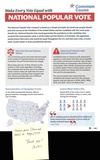
|
2022 aug 23

|
2022 aug 23

|
2022 aug 23

|
2022 aug 23

|
More... |
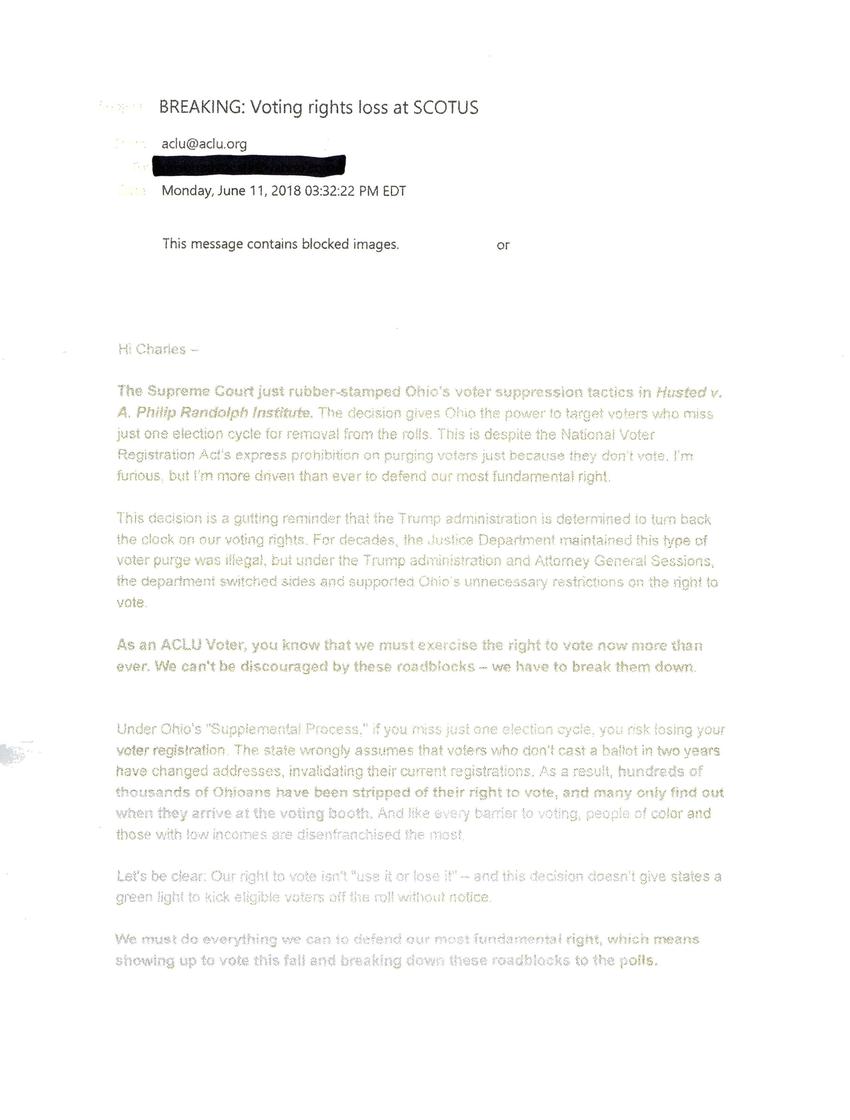

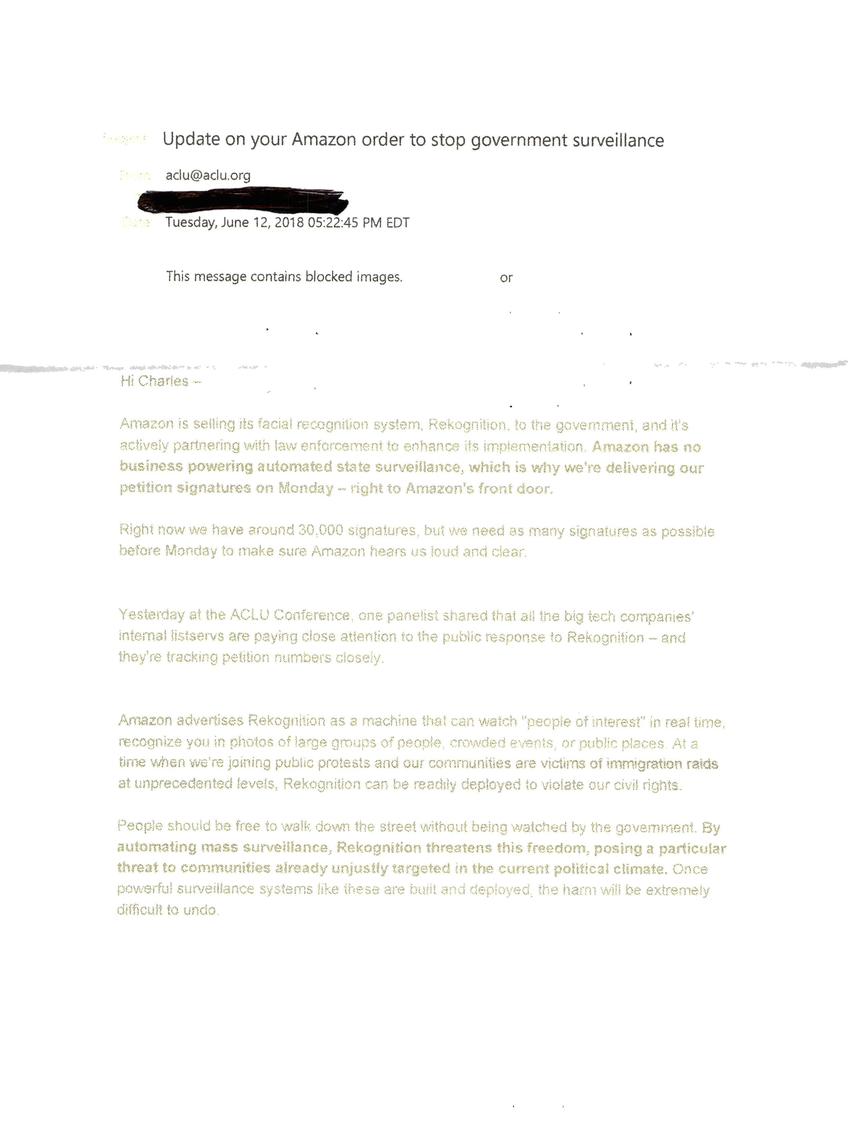

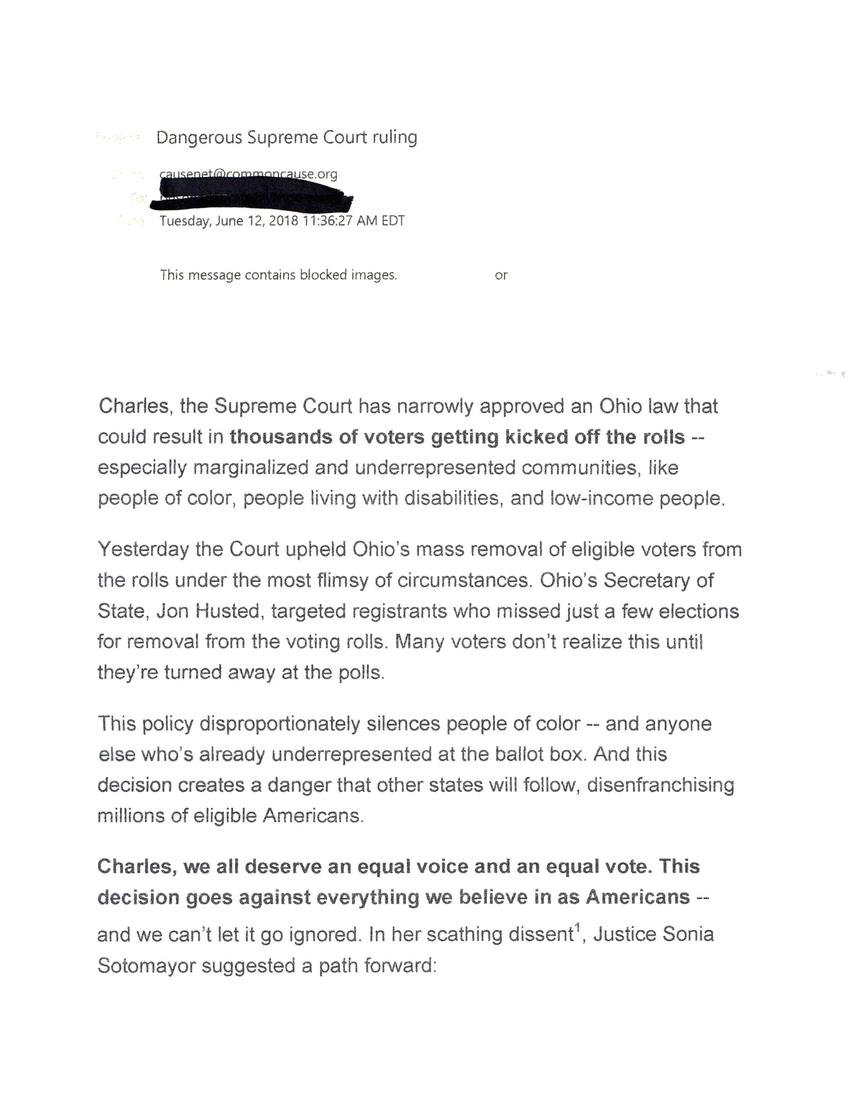
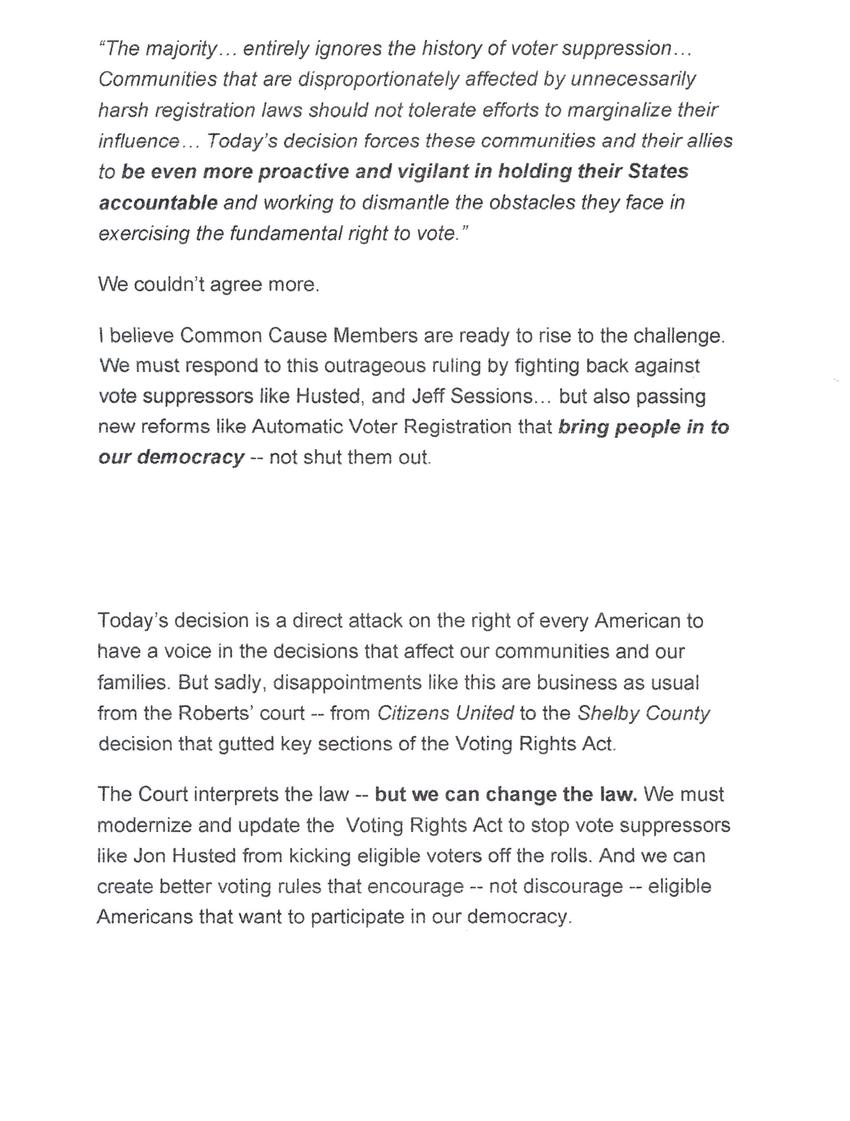

Replies